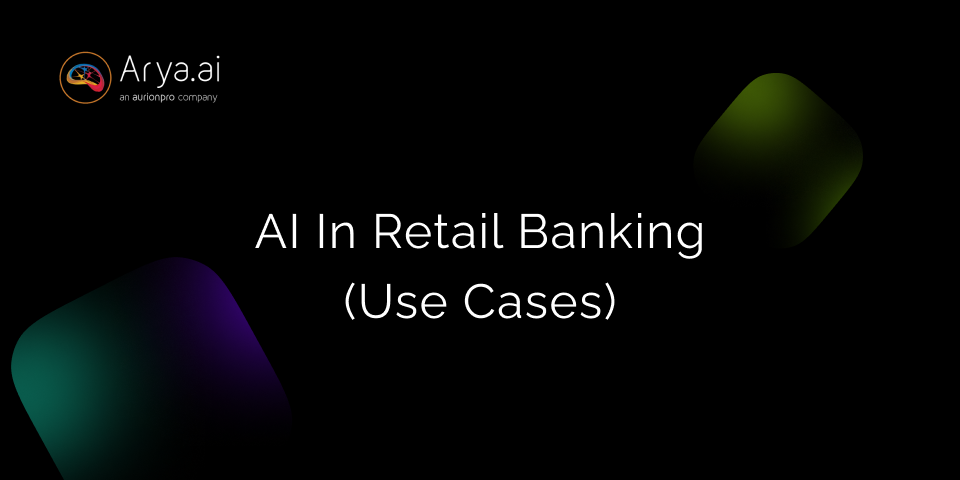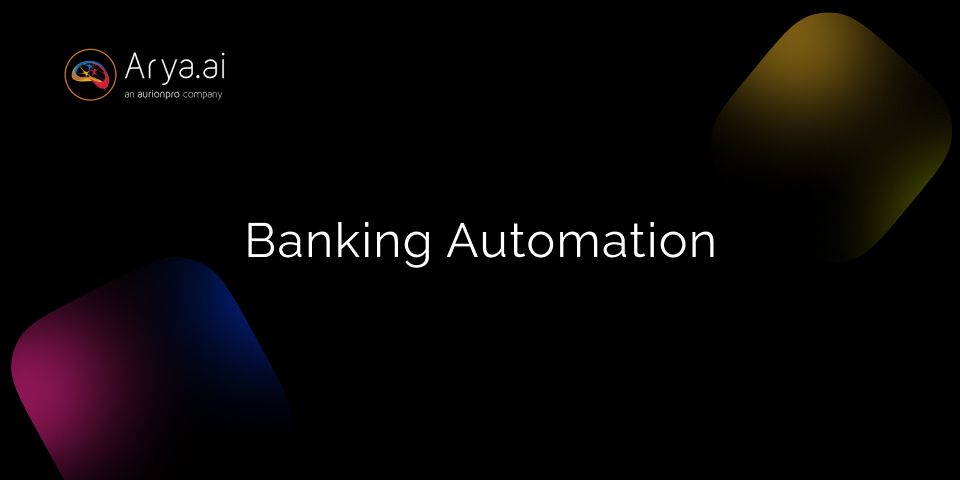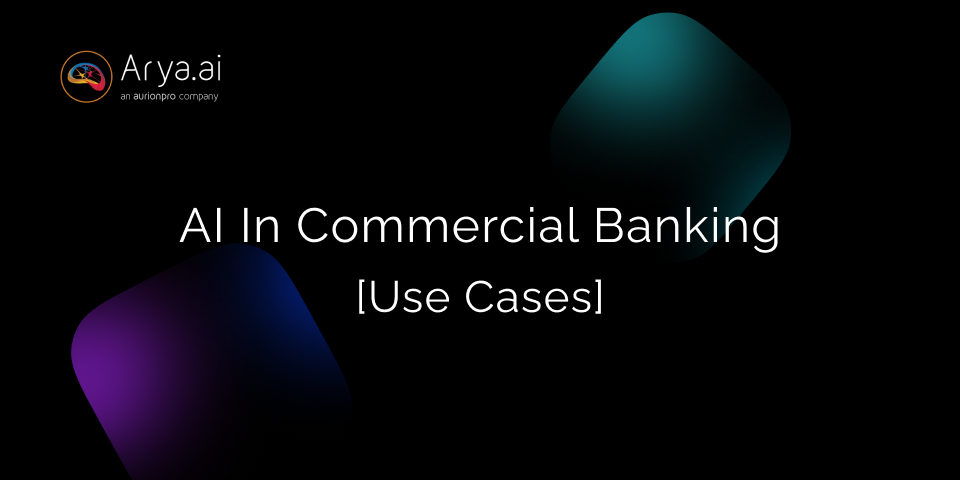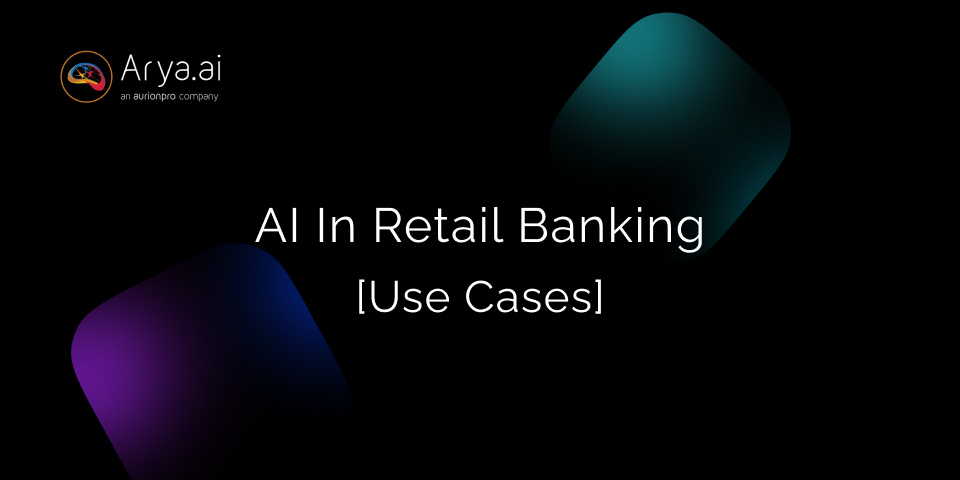World Retail Banking Report reveals that 80% of retail bank executives believe that generative AI represents a significant leap in advancing AI technology. However, only 6% of retail banks are ready with a roadmap for enterprise-wide AI-driven transformation at scale.
As retail banks face pressure to streamline operations and meet evolving customer expectations, AI has emerged as a powerful tool. From predictive analytics to generative AI, banks are finding innovative ways to improve customer satisfaction and stay competitive.
This blog will explore some of the most impactful AI use cases transforming retail banking.
Enhanced Customer Service and Experience
1. Personalized Product Recommendations
AI algorithms analyze vast amounts of data, including transaction history, spending patterns, and even behavioral insights, to suggest tailored products like loan offers, credit cards, and investment options. These recommendations enhance customer engagement by aligning offerings with individual preferences and financial goals.
2. Smart Chatbots and Virtual Assistants
AI-powered chatbots are transforming customer support in retail banking. These virtual assistants handle queries 24/7, from checking account balances to answering complex questions about products and services. By providing instant support, chatbots reduce wait times and enable human agents to focus on high-value interactions.
3. Sentiment Analysis for Customer Feedback
Understanding customer sentiment is crucial for service improvement. AI can analyze text and voice data from customer feedback to identify positive and negative sentiments. This insight enables banks to address pain points and make targeted enhancements to their services, building stronger relationships with clients.
AI in Risk Management and Fraud Detection
4. Real-Time Fraud Detection
AI monitors real-time transactions to identify anomalies or patterns that suggest fraud. For example, sudden high-value transactions or activities in unusual locations can be flagged instantly. AI’s ability to detect these irregularities allows banks to act swiftly, reducing losses and protecting customer trust.

5. Credit Risk Assessment
Traditionally, credit assessments were based on limited data points like credit scores. AI in credit risk assessment enhances this by evaluating a broader range of factors—transaction history, social behavior, and even real-time market conditions—to assess creditworthiness more accurately.
6. Anti-Money Laundering (AML) Compliance
Money laundering detection has long been a regulatory challenge. AI simplifies AML compliance by analyzing account transaction patterns to identify suspicious activities. By automating this process, banks can meet regulatory standards more efficiently and focus resources on high-risk cases.
Process Automation and Operational Efficiency
7. Robotic Process Automation (RPA) for Back-Office Tasks
RPA is helping banks reduce the burden of repetitive tasks, such as data entry, document verification, and reporting. By automating these activities, banks can reduce operational costs, minimize human error, and allow employees to focus on complex problem-solving.
8. Document Processing and Analysis
Banks handle large volumes of documents daily, from applications to contracts. With Natural Language Processing (NLP), AI can extract, analyze, and verify information automatically. This reduces processing times and helps banks respond faster to customer requests, enhancing overall service quality.
9. Predictive Maintenance for ATM Operations
AI’s predictive analytics capabilities extend beyond customer-facing processes. For example, AI can forecast ATM maintenance needs based on usage patterns, minimizing downtime. With predictive maintenance, banks ensure ATMs are always operational, reducing inconvenience for customers and optimizing operational costs.
Enhanced Customer Onboarding
10. Digital KYC (Know Your Customer)
Traditionally, KYC processes are lengthy and involve manual verification of documents. AI streamlines this by automating identity verification through document scanning and facial recognition, allowing customers to complete onboarding from the comfort of their homes.
11. Identity Verification and Biometrics
AI-based biometrics, such as facial recognition and voice authentication, are becoming common in the onboarding process. By incorporating biometrics, banks ensure that only authorized individuals can access their services, improving security without compromising convenience.
Predictive Analytics for Customer Behavior Insights
12. Churn Prediction Models
AI models can identify customers at risk of leaving by analyzing factors like decreased engagement, transaction changes, or customer complaints. With this information, banks can take proactive steps to retain these customers by offering personalized incentives or services.
13. Cross-Sell and Upsell Recommendations
By analyzing customer behavior, AI helps banks identify opportunities to cross-sell or upsell relevant products, such as investment options for high-savings customers or tailored loan products. These targeted recommendations not only increase revenue but also enhance customer satisfaction by offering valuable, need-based products.
AI Use Cases Evolution [Post-Generative AI]
14. Generative AI for Conversational Banking
Generative AI is enabling banks to create conversational bots that go beyond pre-defined scripts. These bots offer a more empathetic, human-like interaction, helping customers feel more understood and comfortable. They can provide comprehensive answers, help with complex queries, and even predict customer needs based on past interactions.
15. AI-Powered Personal Financial Management
Generative AI allows banks to provide advanced financial planning tools that offer personalized advice on budgeting, saving, and investing. By analyzing customer spending patterns and financial goals, these tools create tailored financial plans, turning the bank into a trusted financial advisor and helping customers make more informed decisions.
Future Predictions for AI in Retail Banking
⮞ Hyper-Personalized Financial Coaching
AI will transform the banking experience by providing customers with real-time, hyper-personalized financial coaching. Through advanced data analysis, AI will interpret each customer’s spending patterns, saving habits, and financial goals to offer proactive recommendations tailored to their unique situation.
⮞ Empathetic and Conversational AI for Customer Support
As conversational AI evolves, banking customers will encounter virtual assistants capable of truly understanding and responding to their emotions. Next-generation chatbots will be able to detect stress, confusion, or frustration in a customer’s voice or text, adapting responses to provide reassurance and a sense of calm.
Conclusion
AI is reshaping retail banking, from personalized experiences and enhanced risk management to streamlined onboarding and innovative post-generative AI applications; the use cases demonstrate AI’s role in shaping the future of banking.
The future of retail banking, powered by AI, promises to truly understand and meet the evolving needs of the digital consumer.






